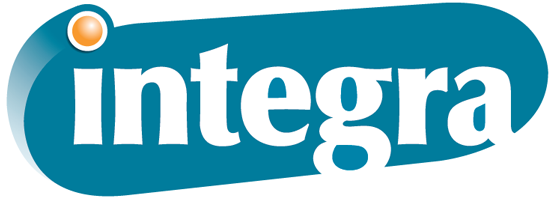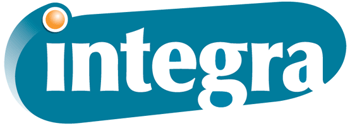7 Tips to Keep Your Product Manual Printing Costs Low
January 20th, 2024 | 6 min read

When you’re planning a product launch or redesign that will require some kind of product manual to go with every unit sold, how can you make sure it’s done right? And equally important, how can you keep the costs low to avoid a huge dent in your sale’s profits?
At Integra, we’ve helped customers from numerous industries find ways to cut costs in their product manual printing. It’s a required piece of print work for thousands of items, but no smart business wants to blow their budget on post-sale documentation.
Let’s take a look at seven tried and true strategies for consistently, reliably printing professional product manuals without breaking the bank on it. That way, you can focus your print and marketing dollars where they matter most: Drawing new customers and making more sales.
1. Cut the Fluff: Put Only Must-Have Information in Your Product Manuals
This tip is far and away the most important one to the bottom line. The fewer words and pictures you include, the fewer pages you need. The fewer pages you print, the less you’ll pay per unit.
It doesn’t have to mean cutting your manual down to bare bones information that isn’t helpful to the buyer. Afterall, you have a reputation to protect, and after-sale care is still a vital duty in doing so.
But you also don’t need to pad the manual with information about your company and the work you do. For better or worse, most people throw their product manuals away after use. That means they’ll be most effective as clear, concise, helpful inserts that get straight to the point. They’ve already bought from you, so respect their time as you respect your own budget!
2. Trim the Fat: Keep Your Product Manual’s Page Count as Low as Possible
Okay, so “trim the fat” isn’t so different from “cut the fluff,” but that’s because the two go hand in hand. You can’t do one without the other.
As you build content and design your product manual, try to remember that fewer pages equals less money. It requires less work and materials from your printer, and it can also save you money in the binding stage, which we’ll cover later.
You don’t want to use font that’s so small your customers can’t read it, but you don’t need the same flashy, eye-catching letters you might have chosen for your last piece of product marketing either. Keep it simple.
The same goes for diagrams and necessary images. You want the manal to be helpful, but the visuals don’t always need to take up full pages. Remember to stay conservative as you’re envisioning your product manual and setting up the design, not just in content itself but in the final page count.
3. Choose the Standard Paper Size or Smaller
Next, you’ll want to keep it simple when you’re choosing your paper type. Again, most people interacting with this content have already purchased something from you. You’re no longer advertising to them, so the little details that go into marketing aren’t necessary. Now, they just need a helpful insert that allows them to use and enjoy their product for the long-term, so you can skip paper embellishments, thick sheets and fancy coatings and finishes.
But what about size?
You probably weren’t planning to include a full banner as a product manual, but it’s worth noting that you’ll stay fiscally conservative in this project by opting for 8.5” by 11” standard paper. You can cut prices even more with 4” by 6” postcard-sized, single-sheet “manuals.”
In fact, if you’re selling an extremely simple product and just want to include something like a thank you note, quick warning or basic steps for use, you could even go with an insert the size of a business card. That doesn’t work for most customers in most situations, but in some instances it’s a budget saver. At Integra, we can and have printed these small cards for a few select clients, and they cost pennies per piece.
4. Select Low-Cost Product Manual Binding
The optimal situation for cost savings would be an insert of a single sheet, but we know that’s not possible for every type of product. Some of the clients we regularly print for need manuals anywhere from 20 to 50 pages per piece, and that’s after they’ve cut down content and optimized space on each page.
If you’re selling vehicles, medical devices, construction equipment or software, to name just a few common industries, your product manual is likely to contain dozens of pages of vital information. So how can you bind these manuals in the most cost-effective way?
Depending on your manual and exactly how many pages it ends up being, you can choose:
- Folding: Some equipment can fold pages inline, which saves time and money. Some can’t, however, and the folding will cost extra as a secondary process on a separate machine from the printer.
- Single-staple saddle stitching: Manuals with fewer or smaller pages can sometimes get away with a single stitch, done either inline or as a secondary process on a separate machine.
- Multi-staple saddle stitching: Larger manuals will need two or sometimes even three stitches as adequate binding. Find out whether your print professional has equipment able to take care of this binding process inline. If not, they’ll need to do a second run for binding.
The methods above are the simplest, lowest cost binding solutions available, but there’s still some fluctuation in cost within each category.
5. Order Product Manuals in Bulk When Possible
If you know you’re going to need identical product manuals for hundreds or thousands of sales to come, try to order in the largest possible quantities. You’ll pay more up front, but your unit price will stay much lower with large orders, since the cost of equipment setup can be spread across more pieces.
Remember to give plenty of lead time for bulk manual orders so that you don't find yourself with a shortage while you wait for your prints. To get a quick estimate on your project's likely turnaround time with Integra, check out our timeline calculator below.
While printing in bulk is a solid strategy for lowering costs, we understand that it’s not the best option for all businesses. Many of our current print buyers work in industries with ever-evolving products and product information. Product codes and best practices can change as often as weekly or monthly in the medical industry, for instance, which would render a large backstock of product manuals obsolete.
Think about your business and how often each manual would need to change. Doing so will help you follow the next important strategy for keeping manual costs low — the dreaded reprinting.
6. Avoid Reprinting Your Manuals by Catching Errors and Predicting Changes
As you prepare your files for submission to your printer, take care of as much proofing as possible. Aim for the cleanest, most accurate version of the manual you can put together so there’s less chance of errors slipping through the cracks. The last thing you want is to find an error post-print that’s major enough to require a reprint, which would generally double your costs.
A few workarounds do exist if you find yourself in the worst case scenario — bulk manuals with incorrect information. Here are two options:
- Correction labels: If you need minor changes, such as a product code change, you can request printed labels to cover the inaccurate information. However, you will need to apply these labels manually to each piece.
- Loose-leaf manuals: In an industry with semi-frequent changes, another option is to print in bulk but not bind the pages in the traditional way. You could use a three-ring binder or folder to hold the pages, then request update pages as needed to swap out in each folder. The folders themselves will cost extra, however, so compare against your bulk print savings to determine whether this solution is the right one for your project.
If you’re working with a reliable print professional, they’ll take part in your file preparation as well. You may want to consider the merits of working with a print broker, who will review your files before sending them off to the best printer to meet your needs.
Some print management specialists can even help you in the design phase, from getting the details right to fitting information into as few pages as possible for the sake of savings.
7. Choose Black and White for Large Orders
Print-on-demand services and small batches are typically created via digital printing, which can print in full color without costing extra. With bulk orders, on the other hand, we would generally use conventional printing methods to keep prices low.
With traditional print, adding color adds cost. Over a bulk order of manuals, that cost can add up, so consider cutting color and sticking with black and white for these manuals.
Build a Product Manual Printing Strategy That Protects Your Bottom Line
It’s easy to get stressed out when it comes to the logistics of printing must-have documentation on products, especially when you manufacture numerous or complicated projects. Prices can quickly begin to feel daunting.
The after-sale experience you have should be celebratory, not concerned. When you can follow the strategies outlined here, you can get back to making sales and earning profits that aren’t hindered by post-sale costs on your end.
Pick and choose the methods here that work best with your product manual, and remember to discuss your print specs and pricing goals with your print professional — they just might have the perfect strategy for your situation.
If you’re still deciding on a print partner, you may want to know what it’s like to trust Integra Graphics Synergy with a print project. We’d be happy to help get your prices as low as possible while maintaining high-quality, professional product manuals printed how and when you need them.
To get started on your product manual printing, click below!
Topics:



